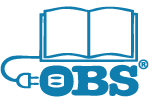How does a reader know that the text in hand or on screen contains true information? Back when I started my publishing career at Little, Brown/Trade Editorial in 1976, many independent publishing houses dotted the landscape of a diverse industry. Readers could trust brands – we knew, for example, that Knopf cookbooks were top of the line (meaning that Knopf carefully vetted the authors they published, tested their recipes, fact checked, copy edited carefully, checked rights and permissions, proofread, etc.) and Rodale had dynamite how-to books containing information one could trust to be true (for the same reasons). Readers trusted in the veracity of published content because of the editorial/production work that publishing houses routinely did before the desktop revolution — and before the advent of the Internet.
While of course some publishers’ brands still retain their “truth” value, increasingly, I’m finding that knowledge about and skill sets that informed those careful editorial/production workflows that used to take place all under one publishing house roof are not as prevalent as they once were. These workflows have been supplanted by software (spellcheck, or indexing software, for example), or outsourced and otherwise distributed to contractors who in most cases can’t bring the same level of quality care and attention to one publisher’s books as employees sharing a common work space once did. There is a pressing need for clear standards in the area of pre-press editorial/production workflows, in light of massive changes in our industry.
These are changes with tectonic implications! Consider three of them:
- The proliferation of “grey” publishers (nontraditional publishers like associations, governments, libraries, etc.),
- The self-publishing boom empowered by the internet — according to Library Journal, “… self-publishing has moved from a small staple of the industry to its fastest-growing and perhaps most profitable sector … Indeed, the number of new self-published titles now rivals, and may exceed, that of the entire mainstream publishing trade.,.”
- Print on demand technology which eliminates a major barrier to entry into the publishing business, makes every published book one-off and unique, and creates a perpetual front list.
Add translation memory to the mix, opening the doors to the global market, in all languages for all time, and the urgency for clearly-defined editorial and production workflows crystallizes.
This is not to suggest squads of “truth police,” but rather the definition and adoption of a “Veritas” editorial/production workflow standard so that 21st century readers may once again trust what they read, online and on paper, knowing that the published content was curated and prepared following best practices based on rigorous editorial and production processes.
